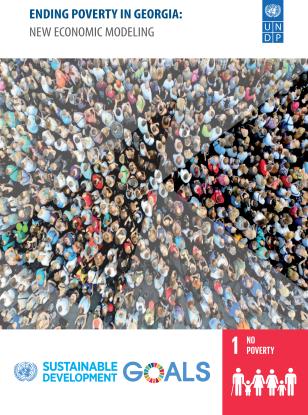Ending Poverty in Georgia: New Economic Modeling

Ending Poverty in Georgia: New Economic Modeling
August 29, 2023
The research paper "Ending Poverty in Georgia", commissioned by the United Nations Development Programme (UNDP), provides an analysis of the impact of the war in Ukraine on the Georgian economy. It examines the implications of this impact on unemployment, poverty, and vulnerable household groups. The study utilizes the newly developed Georgia Social Accounting Matrix (SAM) 2021 and Poverty Model to present poverty outlooks for the period of 2022 to 2027.
UNDP and the Ministry of Economy in collaboration with the Sustainable Development (MoESD) worked on the projections for key external sector drivers such as foreign direct investment (FDI), remittances, exports, and imports. These projections were then used in the SAM model to simulate growth and household consumption.
The modelling results:
- Poverty is expected to continue to decrease in the following years. According to the Business As Usual scenario, the average GDP growth rate is projected to be 4.8% from 2023-2027. This will lead to a 3.7 percentage point decrease in the poverty rate, bringing it down to 11.9%.
- Poverty continues to fall, but at a slower rate than before. The average annual decrease in poverty was 1.6% from 2013-2017, but it has slowed down to 1.3% from 2018-2022. It is expected that this trend will continue to slow down, with an average decrease of 0.7% from 2023-2027.
- Urban poverty is lower and continues to fall more rapidly than rural poverty. Urban poverty is on the decline, falling by 5.7% to 12.3% from 2018-2022. Rural poverty has also decreased by 2.5% to 20.6% over the same period. According to the SAM 2021 poverty is expected to continue decreasing in both urban and rural areas, with a projected decrease of 3.9 percentage points in urban areas and 3.4 percentage points in rural areas from 2022-2027.
Policy implications:
Investing in ending poverty and reducing inequality is possible with high GDP rates, government revenue, and a strong balance sheet. In the short term, increasing social security can lift more households out of poverty. In the medium and long term, prioritizing investments in healthcare and education can elevate individuals above the poverty line and improve their overall well-being.

 Locations
Locations




